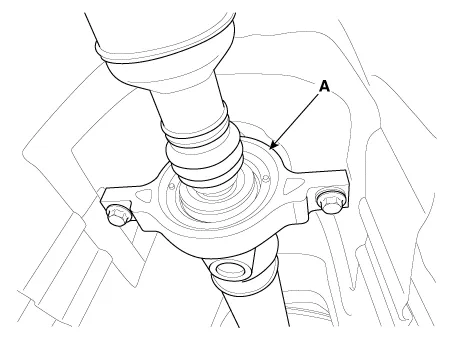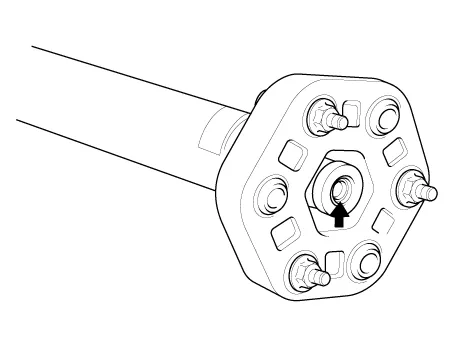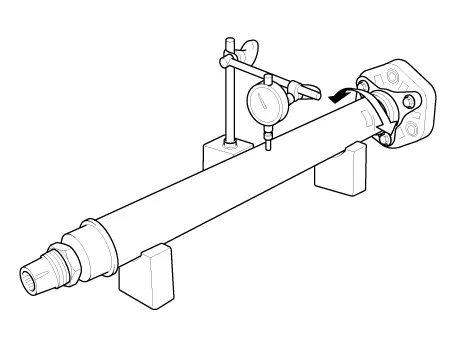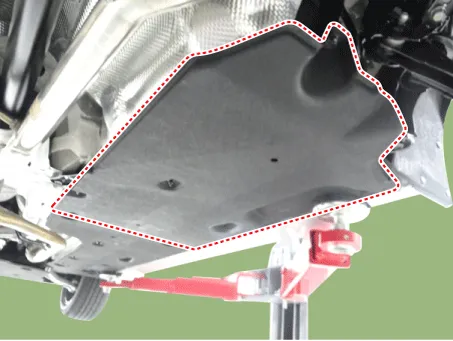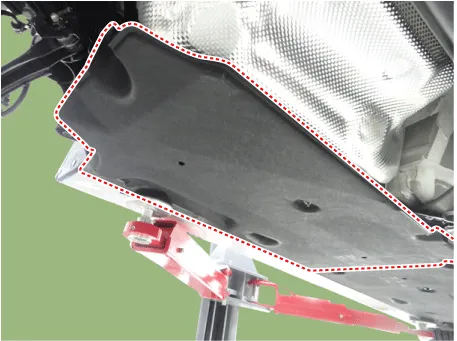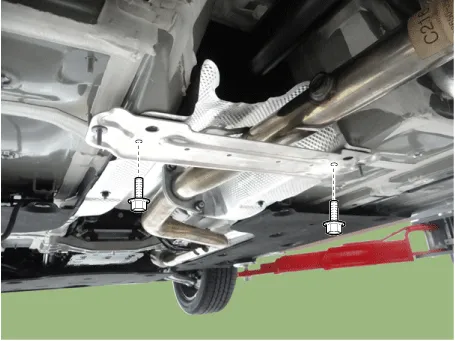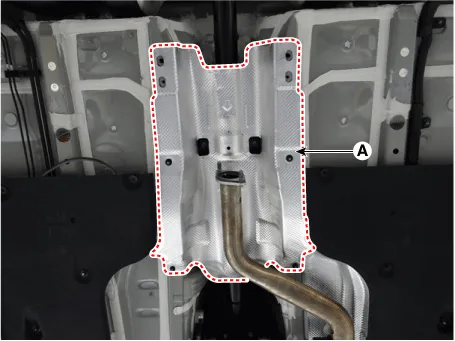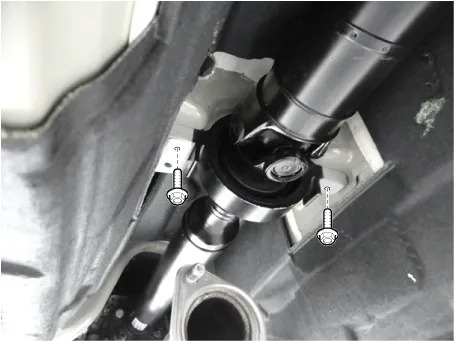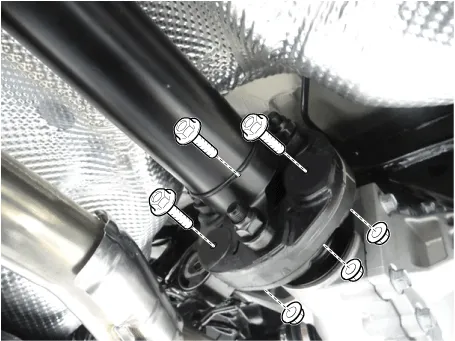Kia Stinger CK: Propeller Shaft Assembly / Propeller Shaft
Repair procedures
| Inspection |
CV Joint and boots
| 1. |
Shift the transmission lever to Neutral. |
| 2. |
Raise the vehicle off the ground, and support it with safety stands in the proper locations. |
| 3. |
Check the center bearing (A) for excessive play or rattle and rubber for rent. If the center bearing has excessive play or rattle and rubber has rent, replace the propeller shaft assembly.
|
| 4. |
Check the CV joint boot for damage and deterioration. If the boot is damaged or deteriorated, replace the propeller shaft assembly. |
| 5. |
Check the CV joint for excessive play or rattle. If the CV joint have excessive play or rattle, replace the propeller shaft assembly. |
Inspect Flexible Coupling
| 1. |
Check the front and rear flexible couplings for cracks or damage. |
| 2. |
Inspect the flexible coupling centering bushing.If the busing is damaged, replace the propeller shaft assembly.
|
Universal Joint Inspect
| 1. |
Check that the spider bearing rotates smoothly. |
| 2. |
Check that there is no play in the spider bearing if necessary, replace the propeller shaft.
|
Propeller shaft runout
| 1. |
Install a dial indicator with its needle on the center of front propeller shaft or rear propeller shaft. |
| 2. |
Turn the propeller shaft slowly and check the runout. Repeat this procedure for the other propeller shaft.
|
| Removal |
| 1. |
Remove the floor under cover.
|
| 2. |
Remove the stiffener bar bracket. [LH, RH]
|
| 3. |
Remove the stay bracket.
|
| 4. |
Remove the center muffler. D 2.2 R VGT (Refer to Engine Mechanical System - "Muffler") G 2.0 T-GDI THETA II (Refer to Engine Mechanical System - "Muffler") G 3.3 T-GDI LAMBDA II (Refer to Engine Mechanical System - "Muffler") |
| 5. |
Remove the heat protector (A).
|
| 6. |
Remove the front muffler. D 2.2 R VGT (Refer to Engine Mechanical System - "Muffler") G 2.0 T-GDI THETA II (Refer to Engine Mechanical System - "Muffler") G 3.3 T-GDI LAMBDA II (Refer to Engine Mechanical System - "Muffler") |
| 7. |
Loosen the bolts and then separate the front propeller shaft.
|
| 8. |
Loosen the center bearing propeller shaft bolts.
|
| 9. |
Loosen the rear propeller shaft bolts and then remove the propeller shaft.
|
| 10. |
Install in the reverse order of removal. |
Other information:
Kia Stinger (CK) 2018-2023 Service Manual: Windshield wipers
Operates as follows when the ignition switch is turned ON. MIST : For a single wiping cycle, move the lever to this (MIST) position and release it. The wipers will operate continuously if the lever is held in this position. OFF : Wiper is not in operation INT : Wiper operates intermittently at the same wiping intervals. Use this mode in light rain or mist.Kia Stinger (CK) 2018-2023 Service Manual: Heater Control Unit
Description and operation Description Smart Ventilation It is a system that actively ventilates when the humidity inside the passenger compartment increases with the air conditioning OFF. 1. Entry condition a. Air conditioning OFF b. When humidity rises c.Categories
- Manuals Home
- Kia Stinger Owners Manual
- Kia Stinger Service Manual
- New on site
- Most important about car

